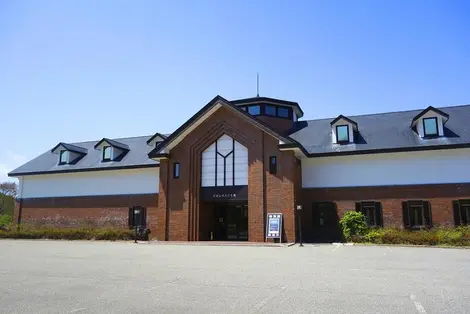The village of Kitashiobara 北塩原村
A village between lakes and mountains
300 kilometers north of Tokyo, the village of Kitashiobara is nestled in the hollow of the mountains. It is the ideal starting point for discovering exceptional natural sites that are little known to tourists...
In the heart of the mountains
With just under 3,000 inhabitants, the village of Kitashiobara is located in the far north of the Aizu region. It is in fact formed from three former villages, Kitayama, Ōshio and Hibara , which merged in 1954. For the occasion, the three names were then combined to create the portmanteau "Kitashiobara", the new name of the village. The latter is nestled between the Bandai, Azuma, and NishiAzuma mountains . At the foot of the mountains, surrounding the village, there are also three large lakes: Akimoto, Onogawa and Hibara . The latter was created during the great eruption of Mount Bandai (1,816 meters) in 1888. South-west of the village, the beautiful Oguni pond is classified as a national natural monument by the state.
The village, located in the north of the island of Honshu, in the heart of the land, is subject to a cold climate and spends a good part of the year under the snow. It is however pleasant to visit in any season , especially in autumn because the surrounding mountains are covered with maple trees.
See also: Koyo, autumn in red and gold
Village activities
The village itself has quite a few points of interest. Nevertheless, two notable museums can be visited if you are passing through: the Morahashi Art Museum , and the Mount Bandai Eruption Museum . The first, founded in 1997, is very surprising: indeed, it houses a fine collection of works by the Spanish surrealist painter Salvador Dali . What a surprise for this small private museum, located in a small village in the middle of the Japanese countryside! Works by masters such as Renoir, Picasso, Matisse and Van Gogh are also exhibited. You can admire this beautiful collection for 950 yen (about 7€20). Be careful though, the museum is closed during the winter.
When at the Mount Bandai Eruption Museum , it traces the history of the 1888 eruption . For 600 yen the entrance (4€50) it offers, in a didactic way, to learn more about earthquakes, as well as the effects of the eruption on the local flora.
Finally, Kitashiobara is ideal for winter sports enthusiasts . The Gran Deco Snow ski resort , located 1,000 meters above sea level on Mount Nishi-Daiten, welcomes skiers and snowboarders to the north of the village. It benefits from beautiful snowfalls, which allow skiing from December until the beginning of May.
Read: Skiing in Japan
Splendid natural sites
The beautiful region of Aizu is home to mountains and lakes that offer magnificent landscapes and panoramas . They are the perfect setting for walks and hikes, snowy or sunny. When visiting Kitashiobara, you can easily explore the most beautiful natural sites, starting with Lake Hibara . Created by avalanche debris from the eruption of Mount Bandai, this lake at the time flooded the village of Hibara , the remains of which are still submerged at the bottom of the water. Its banks are very pleasant to explore on foot or by car , to discover beautiful viewpoints. In summer, you can camp there and even fish there, or borrow a small pedal boat. In winter, it is possible to try fishing through the ice .
Along the same lines, Onogawa and Akimoto lakes are also very scenic. Lake Akimoto is particularly recommended in autumn, to admire the reflections of the maple trees that have turned red. It is also very popular with photographers for its sumptuous sunrises .
The surrounding mountains, very recommended for skiing, are also magnificent in summer and autumn . The well-known and respected Mount Bandai is one of Japan's 100 Famous Mountains. On its southwest side, the Enishi temple is a good stopover. We advise you to take a very popular road, the Bandaisan Gold Line , which leads to the foot of the mountain and offers exceptional views during the fall.
To discover: The mountains in Japan
To complete your visit to the region, the Onogawa Fudotaki waterfall , south of Lake Hibara, is particularly impressive with its waterfall over 25 meters high.
Address, timetable & access
Address
Website
http://www.vill.kitashiobara.fukushima.jp/docs/2011071200013/


































